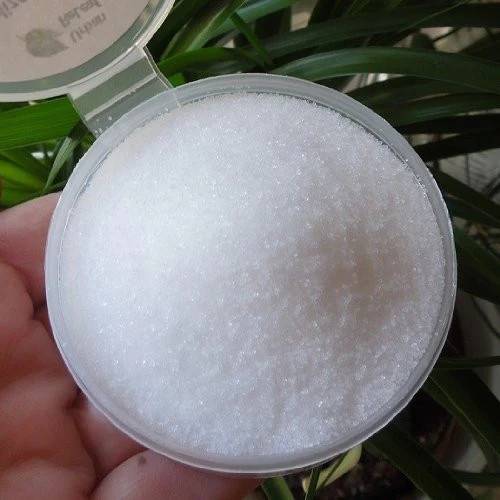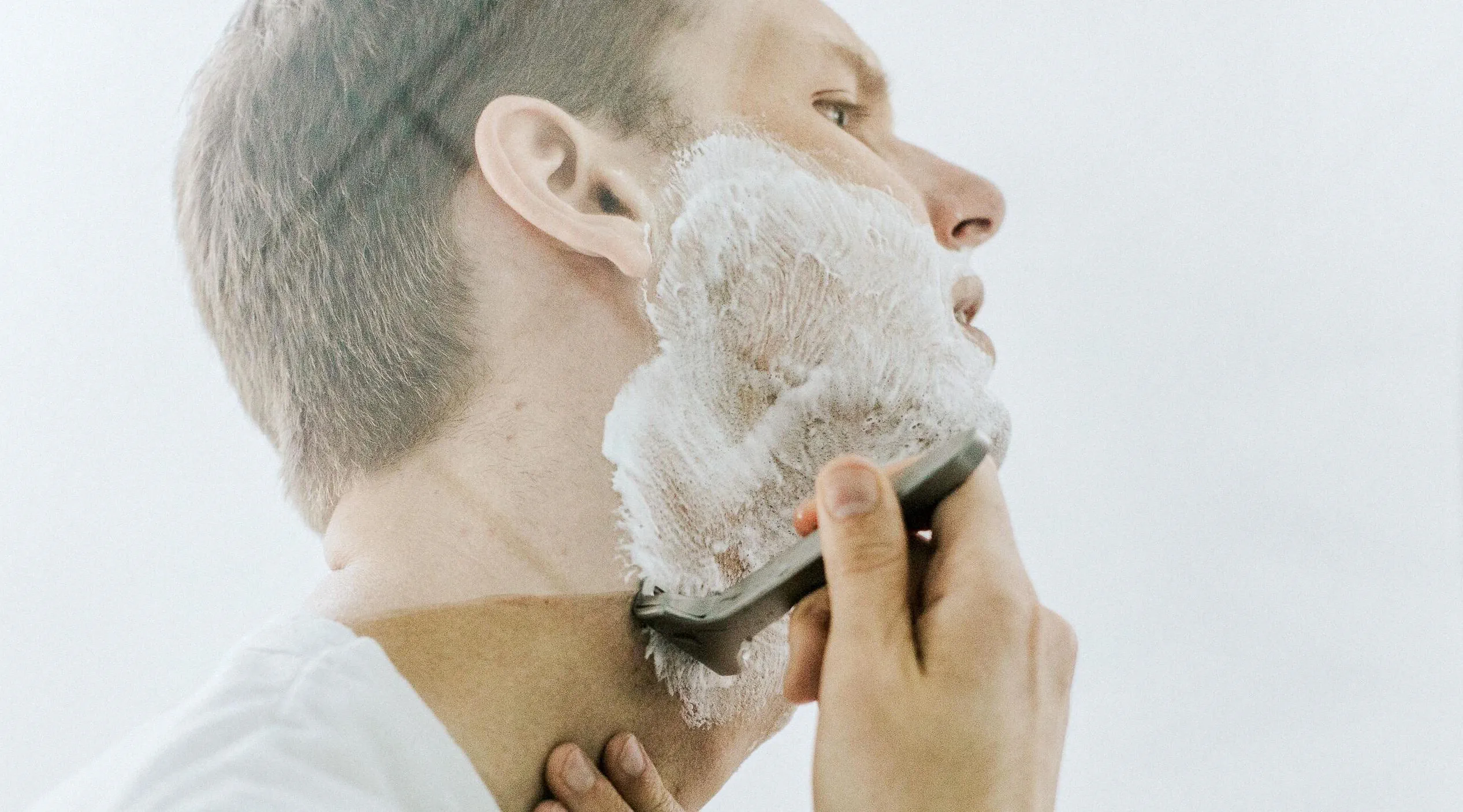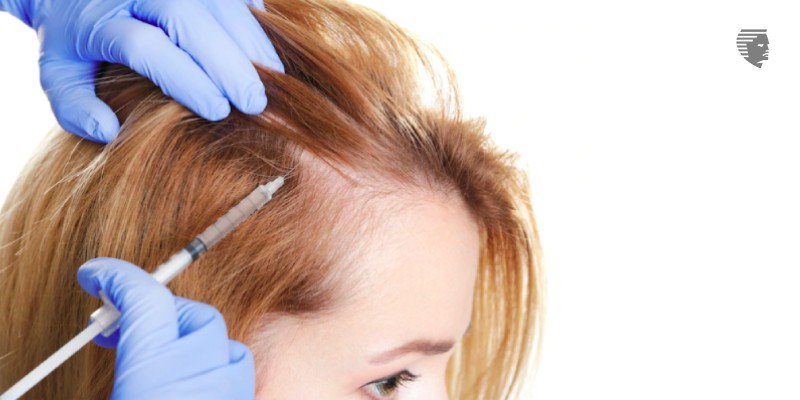Yes, you can use table salt to clean your piercing, but it’s important to do it correctly. Start by mixing 1/4 teaspoon of non-iodized table salt with 8 ounces of warm distilled water to create a saline solution. Gently clean your piercing with a cotton ball soaked in this solution, ensuring that the salt is fully dissolved. Avoid using excessive force or rotating the jewelry. Doing this 2-3 times a day can help promote healing.
However, if you experience irritation or discomfort, consult with your piercer or a healthcare professional. Always prioritize cleanliness and follow proper aftercare practices for a safe and healthy piercing.
What Are The Benefits of Using Table Salt?
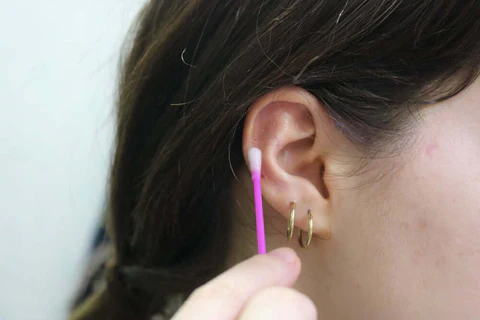
Using table salt for various purposes, including piercing aftercare, brings distinct benefits.
Antiseptic Properties
Table salt possesses natural antiseptic properties that aid in preventing infection and promoting a clean healing environment for piercings. The saline solution created by dissolving salt in warm water helps to cleanse the piercing site by removing debris and minimizing the risk of bacterial growth. The mild antiseptic nature of salt supports the body’s natural healing processes, contributing to the overall well-being of the pierced area.
Cost-Effectiveness
One notable advantage of using table salt for piercing aftercare is its cost-effectiveness. Table salt is an inexpensive and widely available household item, making it a budget-friendly option for individuals looking to care for their piercings without investing in specialized products. This accessibility ensures that cost is not a significant barrier to maintaining proper aftercare routines.
Availability
Table salt is readily available in most households and grocery stores, making it a convenient option for individuals seeking a simple and accessible solution for piercing aftercare. Its widespread availability ensures that people can easily procure it without the need for specialized trips or purchases.
However, this accessibility is particularly beneficial for individuals who may not have immediate access to specialized piercing aftercare products, promoting consistency in caring for their piercings.
What Risks and Considerations Should You Know for Table Salt Piercing Aftercare?

Irritation and Allergic Reactions
Using table salt for piercing aftercare carries the risk of irritation and allergic reactions. Some individuals may have sensitivity to salt, and prolonged or improper use can lead to redness, swelling, or itching around the piercing site.
However, It’s vital to be mindful of any signs of discomfort and, if experienced, to discontinue use and seek alternative solutions.
Proper Dilution and Application
The effectiveness of table salt for piercing care hinges on proper dilution and application. Creating a saline solution with the correct concentration ensures it is gentle yet effective.
Overly concentrated solutions may lead to irritation, while under-diluted ones might not provide adequate cleansing.
Consistency in application, using a clean cotton ball or swab, helps avoid introducing contaminants and promotes a hygienic healing environment.
Professional Advice
While table salt can be a practical solution, seeking professional advice is essential. Individual variations in skin sensitivity and piercing types necessitate personalized guidance. Consulting with a professional piercer or healthcare provider ensures tailored recommendations, addressing specific needs and potential challenges. Their expertise can help navigate any uncertainties, contributing to a safer and more effective piercing aftercare routine.
What Are The Alternatives to Table Salt?
Commercial Saline Solutions
Commercial saline solutions are pre-made mixtures specifically designed for piercing aftercare. These solutions, available in most drugstores, contain a balanced blend of salt and sterile water.
Unlike table salt solutions, commercial options eliminate the need for individuals to measure and mix ingredients, ensuring consistent and safe application.
The sterile nature of these solutions minimizes the risk of introducing contaminants, making them a convenient choice for those seeking a hassle-free and standardized approach to piercing care.
Distilled Water and Sea Salt Mixture
Creating a saline solution with distilled water and sea salt is another alternative to using table salt. Distilled water ensures purity, free from impurities that may be present in tap water.
When combined with sea salt, which contains essential minerals, this mixture mimics the natural saline balance of the body.
While this alternative requires proper measurement to maintain the correct concentration, it provides individuals with the flexibility to create a homemade solution that closely aligns with the body’s natural composition. However, it’s important to ensure accurate proportions to prevent irritation or insufficient cleansing.
Can You Provide a Step-by-Step Guide for Using Table Salt Effectively?
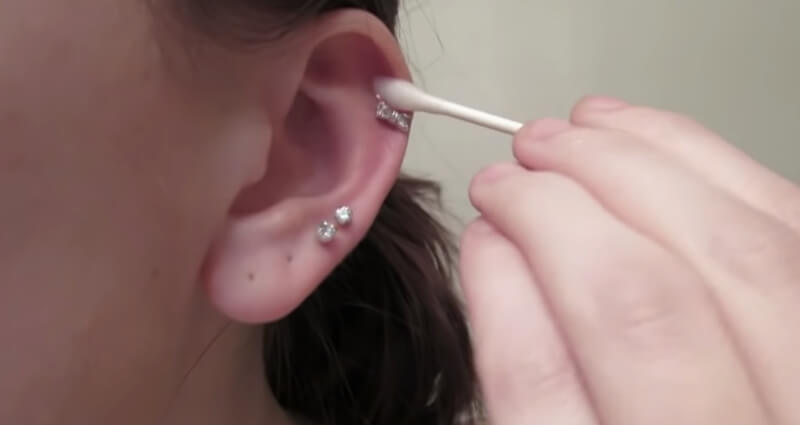
Preparation of the Solution
- Choose Non-Iodized Table Salt: Selecting non-iodized table salt is vital as iodine can be irritating to the piercing. This type of salt ensures a gentler cleaning solution.
- Measure Carefully: Accurate measurements are key. Typically, use 1/4 teaspoon of salt for every 8 ounces of warm distilled water. This precise ratio ensures the solution is effective without causing irritation.
- Dissolve Thoroughly: Thoroughly dissolve the salt in warm distilled water. Ensure there are no undissolved granules, as these can be abrasive and lead to discomfort.
- Let it Cool: Allow the solution to cool to a comfortable temperature before application. A lukewarm solution is gentle on the piercing and more pleasant during the cleaning process.
Application on the Piercing
- Wash Your Hands: Begin with clean hands to prevent introducing any additional bacteria to the piercing site.
- Soak a Cotton Ball or Swab: Dip a cotton ball or swab into the saline solution. Make sure it is fully saturated but not dripping excessively.
- Gently Cleanse the Piercing: With care, clean the piercing and the surrounding area. Avoid applying excessive pressure or rotating the jewelry, as this can hinder the healing process.
- Rinse with Warm Water: After cleansing, rinse the pierced area with warm water. This helps remove any residual salt and promotes a clean and comfortable healing environment.
Aftercare Routine
- Frequency: Repeat the cleaning process 2-3 times a day to maintain optimal cleanliness and support the natural healing process.
- Avoid Harsh Products: Steer clear of harsh soaps, alcohol-based solutions, or hydrogen peroxide. These can be too abrasive for a healing piercing and may cause irritation.
- Pat Dry: After cleaning, gently pat the area dry with a clean, disposable paper towel. Avoid using cloth towels to minimize the risk of introducing additional bacteria.
- Observe for Changes: Regularly check for any signs of irritation, infection, or allergic reactions. If you notice anything unusual, consult with a professional piercer or healthcare provider promptly.
- Consult with a Piercer: If in doubt or experiencing issues, seek advice from a professional piercer. Their expertise can provide personalized guidance based on your specific piercing type and individual healing process.
FAQ
Can I use table salt to clean my lip piercing?
The use of table salt for cleaning a lip piercing is generally not recommended. Lip piercings are sensitive, and a saline solution, specifically designed for piercings, is a safer choice. Consult your piercer or a healthcare professional for suitable aftercare options.
Can I clean my belly button piercing with table salt?
Cleaning a belly button piercing with table salt is not the ideal method. A saline solution designed for piercings is a safer choice, ensuring effective cleansing without potential irritation. Professional aftercare guidance is recommended for belly button piercings.
What can I use to clean my piercing if I don’t have saline solution?
If saline solution is unavailable, consider a sea salt solution. Dissolve non-iodized sea salt in warm distilled water. However, consulting with a professional or using alternative piercing aftercare products is advised for optimal results.
Can I clean my piercing with just water?
Cleaning a piercing with only water may not provide sufficient antimicrobial action. While water rinses are acceptable, using a saline solution or specialized piercing aftercare solution is recommended to maintain a hygienic healing environment.
Can you use Q tips to clean piercings?
Using Q tips to clean piercings is discouraged, as cotton fibers may snag on jewelry or leave residues. Opt for sterile gauze or non-woven swabs for a safer application during the cleaning process.
What is the best thing to clean piercings with?
The best thing to clean piercings is a saline solution specifically designed for aftercare. These solutions maintain a balance suitable for healing, aiding in preventing infections and promoting optimal recovery.
What is the best solution to clean piercings with?
The best solution to clean piercings is a saline solution, readily available in piercing aftercare products or prepared at home using non-iodized sea salt and distilled water. Always follow professional aftercare recommendations for the best results.
Can I use Morton salt for piercing?
Morton salt, like table salt, is not recommended for piercing aftercare. Non-iodized sea salt is preferable for creating a saline solution due to its compatibility with the body’s healing processes.
Can I clean my piercing with Dawn soap?
Using Dawn soap to clean piercings is generally not advised. The chemicals and fragrances in dish soap can be harsh and irritating. Stick to saline solution or specialized piercing aftercare products for gentle and effective cleaning.
Final words
Using table salt to clean your piercing is a cost-effective and accessible option. Its antiseptic properties can aid in preventing infections, but it’s necessary to follow the right steps. Ensure precise dilution, gentle application, and consistent aftercare. While table salt can work well for many, individual reactions vary.
Moreover, If you experience irritation or doubt your approach, consult a professional piercer. Always prioritize cleanliness and consider alternative solutions if needed. Remember, a healthy piercing is a result of careful attention and, when in doubt, seeking expert advice ensures a safe and successful healing journey.

